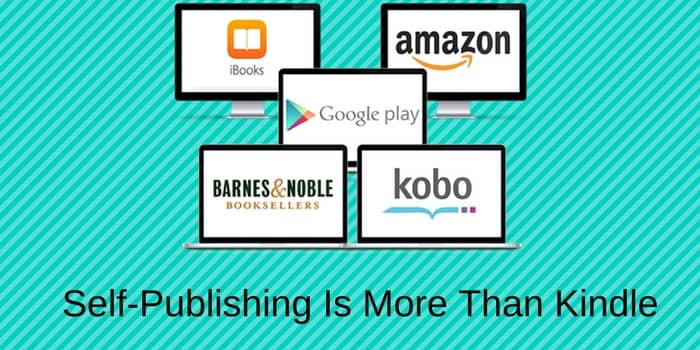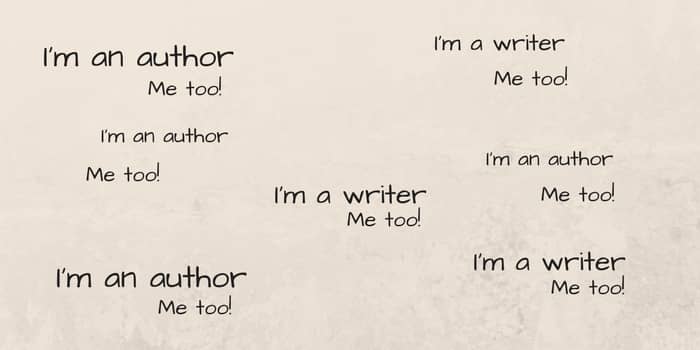 There’s more to self-publishing than Kindle
There’s more to self-publishing than Kindle
While the Kindle publishing platform is undoubtedly the largest at present, this doesn’t mean that it’s the only viable publishing platform for self-publishing authors. Judging by the number of comments and visits to my recent post, Self Published Authors Get Ready, You’re Being Dumped, there is a genuine concern amongst writers that having all your eggs in one basket can have some drawbacks.
For those who are already self-published and are now considering the alternatives, or for those who may be thinking about self-publishing for the first time, it is worth looking at the various platforms that are available.
Kindle Direct Publishing. Without a doubt, KDP is the quickest and easiest platform to publish ebooks. All you need is a .doc file of your manuscript, a cover image, and your book is published within 24 hours. The most important choice to be made when publishing with KDP is in deciding on whether to enrol exclusively in their KDP Select program. If you do, you cannot publish on any other platform. However, non-exclusive KDP publishing for Kindle is a really a must for anyone publishing ebooks.
Createspace and Lulu. For those wanting to publish in paperback, these two platforms are the most popular. Having your book available in paperback adds credibility, but in today’s market expect that ebook sales will probably far exceed paperback sales.
Smashwords. It is not as easy to publish ebooks on Smashwords as KDP, but the extra time and effort is well worthwhile. Once approved for their Premium Program, your book will be available on Apple iBooks, Sony, Kobo, B&N Nook, Diesel and Page Foundry as well as Library Direct. Of course, you can publish directly with Kobo, Apple and B&N, but the convenience of publishing once with Smashwords makes it very attractive. I highly recommend reading the Smashwords Style Guide before publishing with them though as unlike KDP, the formatting requirements are of a high standard.
There are a number of smaller online publishers and retailers including AllRomance and OmniLit, Entangled Publishing and Elora’s Cave just to name a few. These are genre specific sites and worth looking at if you are writing in a matching genre.
The self-publishing platforms I have mentioned above all provide their services for free. Some offer additional paid services, and when publishing in paperback, you will have to pay a minimal cost for proof copies. However, there are a number of publishers who call themselves self-publishers but are in fact Vanity Publishers.
Authorhouse and Author Solutions. Don’t be fooled by the new labelling. Companies such as these who now call themselves self-publishers are not self-publishers. They are Vanity Publishers who charge a fortune for what you can do yourself for free, or for a minimal cost. All I can say is, beware.
No one knows what lies ahead. The publishing industry is evolving day by day and what works today may not work tomorrow, and visa versa. The best approach in my mind is to have your books and ebooks available on as many platforms and with as many retailers as possible. By doing this you will be positioned to take advantage of changing trends and popularity, especially with regard to ebook reading devices. While Kindle may be king at present, companies such as Kobo and Apple in particular, are increasing their presence in the market.
Whichever way you choose to self-publish, there will be ups and downs along the way. So be prepared and be patient, but most of all have fun and keep writing.




I fully agree with everything you’ve said, Derek. I have my four books available everywhere I can, and I’ve found my books trend at different retailers at different times. In January this year, they were doing great at Apple, but now they’re selling well at Barnes and Noble. At Amazon too, though that seems to be waning lately. What I’m trying to say is that exclusivity robs an author of these opportunities, and the chance to have good sales all year round.
With regard to reading the Smashwords Style Guide, it cannot be stressed enough. The instructions are easy to follow and implement, and the good news is that once your .doc file conforms to Smashwords’ requirements, it’s good to go for any other platform. I have often seen comments on other blogs where authors complain bitterly about the meatgrinder, but I really don’t see the problem. If you play by the rules, your manuscript will be converted perfectly, every time.
I always find it amusing Niki, when I see comments from self publishing authors that say getting a file approved on Smashwords is too difficult. It only requires a basic understanding of Word styles, and five minutes reading to understand for those unfamiliar with it. As you say, Smashwords produces ebook files that are near enough to perfect and then work in nine different ebook file types.
All I can say is that for those authors who find Smashwords too difficult, perhaps they need to learn a little more about ebook self publishing. While Kindle will accept almost anything in a Word file, the results can be awful, with font and formatting errors that drive readers crazy.
My habit now is to get my ebooks approved on Smashwords first, and then publish to KDP. That way I know my ebook will be perfect on all platforms.
I completely agree – I have a friend who said he spent forever getting his book into the correct format for Smashwords, but I have no idea how he managed to take so long. In my experience it’s a case of setting the font size, setting the line spacing, setting the first line indents, setting the margins and adding some boilerplate front text (all using the settings conveniently provided in the Style Guide)…that’s essentially it. It takes me no time at all. And like you, I do it for Smashwords and then use that file for KDP.
Read the damn book. I found it tricky until I read their little booklet on getting it done right. As you say, it’s the go-to way to get it almost perfect and for conversion to other formats.
Hello Derek, Gruezi : )
Great post and overview of possibilities to UPLOAD your files to RETAILERS or AGGREGATORS.
However, this is NOT self-publishing, this is distributing your manuscript!
None of these companies named are publishers! They are service providers, and nothing else.
Words like publishing and self-publishing are constantly mixed up.
Nichts fuer ungut … wie man so sagt.
Hab einen schoenen Tag und Gruss in die Schweiz,
Doris